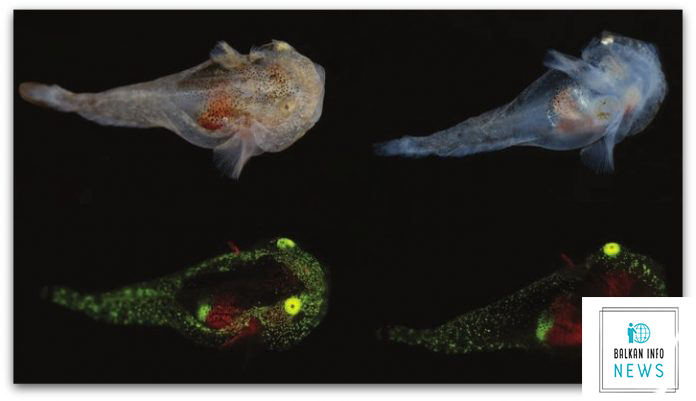This strange fish survives without problems in the negative sea temperatures in the Arctic Ocean

Fish that live in the frozen Arctic Ocean must have special abilities to survive freezing temperatures.
In the ice-cold bath of the Arctic sea, researchers have caught a fish with a body very resistant to low temperatures.
Off the coast of East Greenland, where it was caught, the temperature of ocean currents regularly drops below 0 degrees Celsius. Such low temperatures are enough to freeze the blood of fish accustomed to tropical regions. But polar fish have a hidden secret in their blood – antifreeze proteins.
When researchers sequenced the RNA of the arctic fish, Liparis gibbus, they discovered that the species was packed to the gills with antifreeze proteins.

Just as the antifreeze in your car prevents the water in your radiator from freezing at low temperatures, some animals have developed amazing mechanisms that prevent them from freezing, such as antifreeze proteins that prevent ice crystals from forming. We already know that this tiny snail, which lives in extremely cold waters, produces antifreeze proteins, but we didn’t realize how full of those proteins it is—and how much effort it put into producing those proteins, says biologist David Gruber of the City University of New York.
The fish also known as the spotted snail fish, named after the black spots found on its brown, flabby body, is a rather unremarkable species, but full of surprises.
In 2019, a multicolored snail fish was found that glows green and red, i.e. the first polar fish recorded to be biofluorescent and the first example of a species that fluoresces in two colors.
Scientists have now discovered another secret of this family of fish through RNA sequencing. Among all the thousands of transcripts sequenced in the arctic species, the researchers found several transcripts encoding antifreeze-like proteins, all of which were highly expressed.
In the field of genetics, a “transcript” is an RNK copy of a piece of DNA. It instructs the cell how to make certain proteins. Such high expression of antifreeze transcripts suggests that the Liparis fish line favors these proteins. They are probably crucial for the survival of these fish at negative temperatures.
Ice-binding antifreeze proteins have been found in many other polar and subpolar fish, as well as in some reptiles, insects, and plants.
In fish, these proteins produced in the liver are thought to prevent ice grains from becoming too large or accumulating in cells and body fluids where they could become obstructive.
The most abundant antifreeze-like protein in Liparis is relatively weak compared to other types of antifreeze proteins, but may still play an important role in keeping the biology of these fish functioning. The mix of weaker and stronger proteins could actually work together to give these fish the temperature resistance they need to survive in such icy waters.
For example, while some of the antifreeze proteins may not be strong enough to prevent the growth of ice grains in the blood, they could help transport unsaturated lipids, which require certain temperatures when traveling through blood vessels.
The authors of the study, published in the scientific journal Evolutionary Bioinformatics, say their findings among Liparis gibbus raise the possibility that weak or combined antifreeze activity may be beneficial to Arctic fish.
Source: Science Alert







